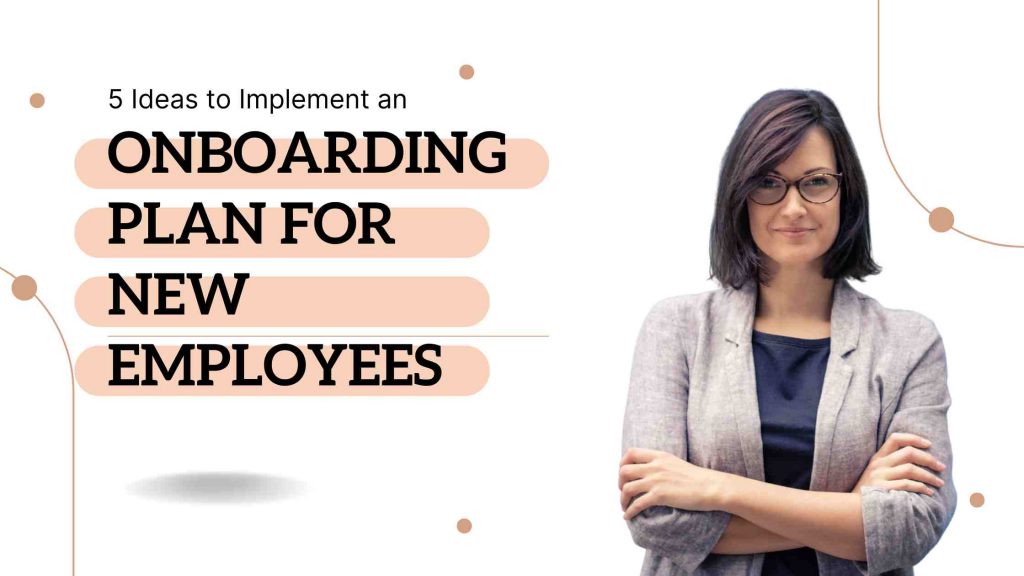As talent management and retention are top priorities for many companies, it is essential to establish a clear route for onboarding and talent development. Finding good employees is not easy, and ensuring employees have all the resources they need to understand their roles and responsibilities is the first step to building a successful working relationship. It requires developing a plan for onboarding and training your new employees, two different stages of new hire orientation that the most successful companies implement to boost their engagement and productivity.
From the employee perspective, having proper onboarding and training shows benefits related to their confidence and motivation, and breaks with the uncertainty of the first days when someone could feel lost without proper support and communication. This first impression is very important for employee satisfaction, and according to Indeed, 39 percent of job seekers who left their jobs during the first 6 months, said that they would have stayed longer with a more effective onboarding and training program.
In this post, we will review some keys to implementing your own onboarding program for new employees. In the next post, we will review some ideas to implement the new hires’ training program. No matter the size of your organization, you can increase your new hires’ satisfaction and retention by applying them.
Define Basic Procedures For The Role And Onboarding New Hires
If you have a very organized company you can have SOP (Standard Operation Procedures) for the position, otherwise, you can start identifying the tasks or procedures the employees need to know to have a good performance. Try to break it into details and also set realistic objectives for the first weeks. You should also define basic procedures for the onboarding process, for example, define the best person to guide the employee in learning or reinforcing key skills, and the resources and time you can allocate to this process. Don’t forget to include in your onboarding procedures to sent an email welcoming the new employee and giving the initial directions.
Schedule A Kickoff Or New Hire Orientation Meeting
Once you know what to expect, schedule the first meeting to discuss practical issues such as signing documents, providing account access, and assuring that all the technical resources are in place for the new employee. During this meeting, you can also discuss the main responsibilities, and review tasks and goals for the first weeks. Try to provide enough background and take into account the employee experience when explaining and assigning tasks. Setting clear expectations will help you structure your follow-up and help the employee identify improvement opportunities.
Include Your Company Culture
Your company culture and values are very important as they define what behaviors and mindsets are expected. Try to include in the day-to-day instructions, some elements of your culture and how are they applied in the workplace. For instance, if you have a very high social responsibility standard, discuss what practices and procedures are encouraged or not followed by the organization. These elements of your culture will provide your employee with a sense of purpose and belonging, helping them understand their role in the company.
Follow Up Regularly During The First Weeks
Even if you are hiring for autonomous and flexible work, you need to check in with your new employees several times a week during the first weeks. It may look overwhelming, but you should understand the magnitude of the process, and provide enough feedback and orientation to your collaborators if you want them to succeed. Remember they are managing your company information and processes.
Identify Skills Gaps
Use the first weeks to identify skill gaps and discuss with your employee to create a training plan. It is difficult to assess the potential of a worker before having a real day-to-day activity, so spend the first weeks assessing their response and performance, and use this information to identify gaps.
Keep in mind that training helps fill gaps in terms of knowledge, skills, and abilities, and there are many alternatives and methodologies for training. Online training is the more accessible tool, but on-the-job
training, mentoring, or job shadowing are also good ways to train a new
hire.
Conclusion
Onboarding and training new employees is a key factor in helping them to reach their full potential, increasing engagement and retention. We just reviewed a few ideas to implement your own onboarding plan, starting with planning ahead and having established procedures for the new role. For many companies is not relevant, and they assume the new employees will find a way to apply what they know in their new workspace. On the other hand, successful companies provide support and a more collaborative approach by implementing effective onboarding and training.
This is also valid when you scale your team with a nearshore partner, you should implement your own onboarding strategy to guarantee success. At Shark Helpers, after you define your procedures we allocate an account manager to help you during the follow-up and identification of skills gaps. We can also help you create training plans for your employees, schedule a call to learn more about https://calendly.com/sharkhelpers





